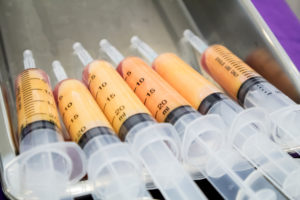
This is a discussion of the Plastic and Reconstructive Surgery Journal article on “Clinical Implications of Gluteal Fat Graft Migration: A Dynamic Anatomical Study.” The commentator is out of Beverly Hills, CA. He has performed thousands of gluteal fat transfers. He raises the question if there is any area in the buttock in which injection deeper than subcutaneous (under the skin, not in the muscle) is ever okay, and asks if you need to inject into the muscle for shaping. He thought the study showed that as long as you stay above the muscle, deeper migration is not possible.
He talks about the limitations of the cadaver study. Yes, cadavers muscle tone and tissue dynamics cannot mimic a live patient. Yes, you do not get the guidance of tissue resistance, muscle tone, and feedback during your injection.
He states you should never do large amounts of fat into the muscle, especially in “danger regions,” which he describes as inferomedial and gluteal cleft adjacent. He criticizes the study, as he says he does not know any surgeons who inject those large volumes purposefully into the muscle itself. He thinks his volumes into the muscle is 10cc? 20cc? 100cc? (NOTE: at my national meetings, I see presenters talking about volumes into the buttock of 1000 cc or more at times. With those volumes, there is no way they are not injecting into the muscle.)
He thinks if you are too overzealous with injecting fat beneath the skin you can have issues, and can create a large cystic cavity.
He does not agree with their technique of lipotumnescing, where you expand, vibrate, and fill at the same time.
His advice: AVOID OR LIMIT
- direct submuscular fat injection
- large volume subfascial (muscular) fat injection because of migration issues
- cannula misdirection
- inadequate ligamentous release (But he says to do this gently with a cycle of back and forth- release- fill- expand. He thinks if the tethering ligaments are not released, it leads to cannula misguidance.)
- overly dilute fat injection
- use of luer lock cannulas (These are cannulas you screw onto the top of a plastic syringe filled with fat to do the fat injecting. He thinks these are more likely to improperly control the direct injection into deeper planes, because they can bend at the junction with the syringe to change the angle of the cannula.)
- improper angling of patient in prone position (jack knife)
- inadequate fluid maintenance
My thoughts?
Clearly fat grafting to the buttock is fraught with issues. In some of the cases of deaths, the doctor swore he “stayed superficial the entire time.” I am curious what amounts they are injecting. I thought some of his pearls were interesting. But can you know you are safe? I also wonder about smaller issues. We discuss the big issues- death, hospitalization, obvious impairment- but are there issues which we just don’t notice? There may be cases of microemboli which affect lung function or other areas, but are subclinical so we don’t know anything happened.
These studies and commentaries are starting to form a picture of what would be “safe” fat grafting to the buttock. It seems small amounts, staying superficial (above the muscle) are okay, knowing your cannula tip is in the right place at all times.
I am glad to see these issues being discussed. I have seen talks at meetings where surgeons were doing incredible amounts of fat transfer. Hopefully these studies and discussions will create safer surgery for all.
The information provided on this website is for general informational purposes only and does not constitute medical advice, diagnosis, or treatment. Always seek the advice of a qualified healthcare provider for any questions regarding your health or medical condition.
